Watercolor Painting Demonstration: City Lights
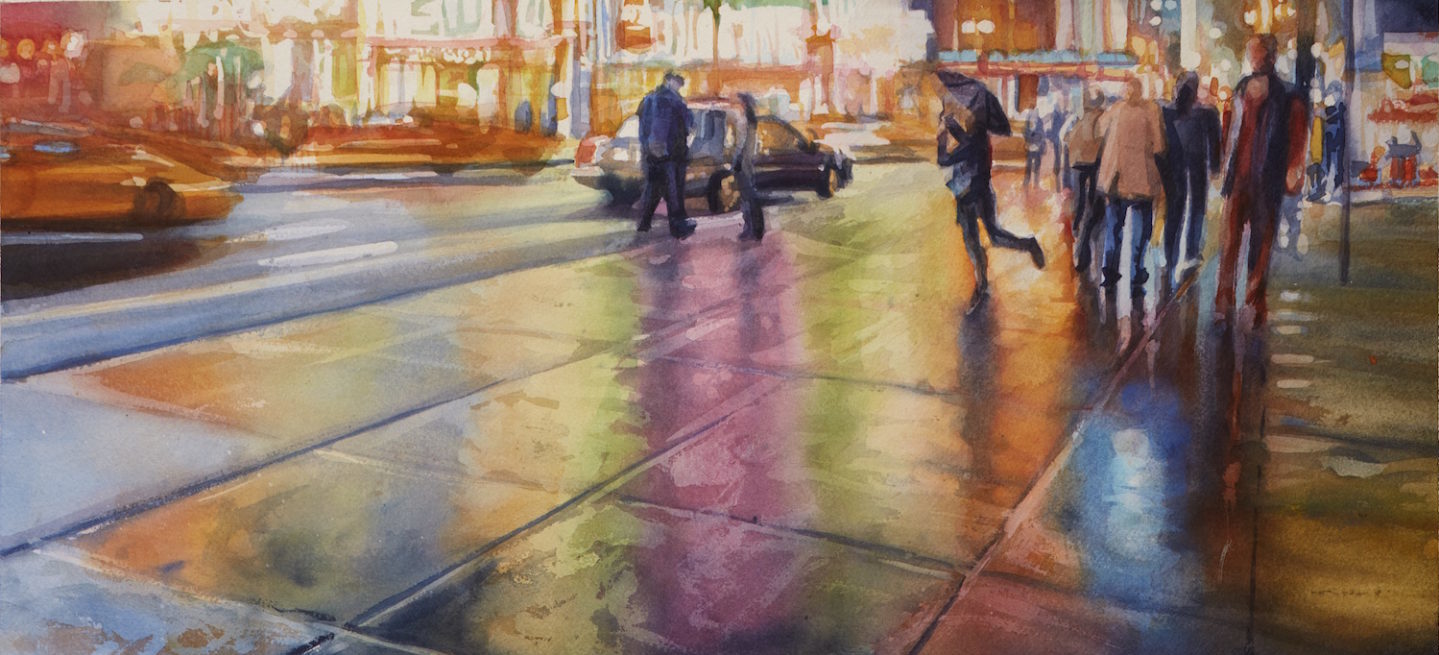
Rain on the pavement, the frenetic energy of busy people, taxis flying by … there’s so much inspiration to be found in a city scene. In this watercolor painting demonstration, the star of the show is a wet sidewalk reflecting vibrant neon lights.
Follow along with acclaimed artist Paul Jackson and learn how to bring this nighttime cityscape to bustling life. Then don’t hesitate to access even more of Paul’s instruction in Watercolor Workshop: Nighttime in the City DVD. Enjoy!
Photo Reference, Drawing and Sketching with Paint
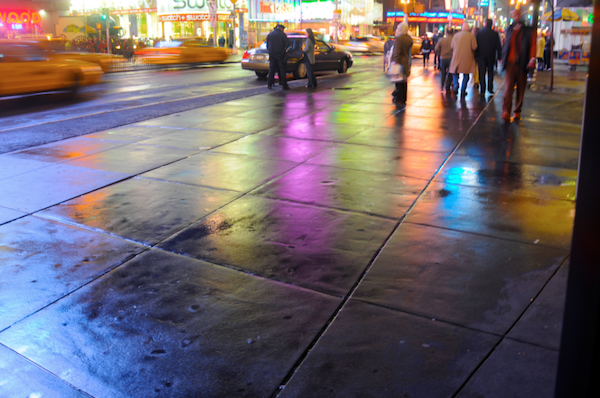
“Nighttime in the city is one of my favorite places to look for interesting stuff to paint,” says Jackson. “I find inspiration just about everywhere, but it’s the city lights that really catch my attention: lots of neon, different colors, especially when they’re reflected in a rainy sidewalk.”
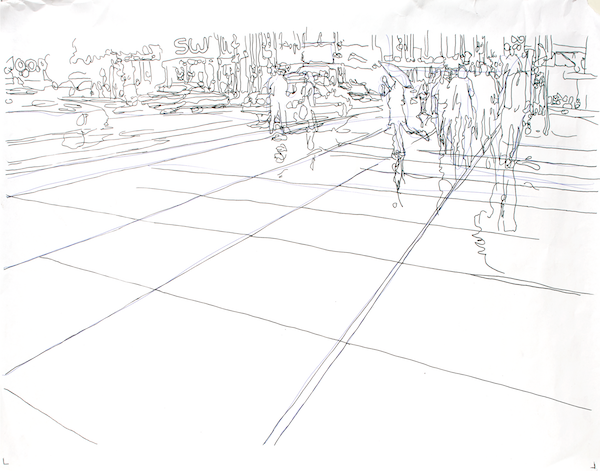
Reference and Change
“In the drawing, I got really, really detailed and basically just sketched an outline around all the lights and the various perspective lines and shapes,” says Jackson. “However, I’ve changed from the reference. You’ll notice that [instead of] the ambiguous image of people here, I’ve … changed to a focal point … a person with an umbrella taking a picture with an iPhone.”
He continues, “In this composition, I liked the police officer writing the girl a ticket and the car, [and] I liked some of the figures on the sidewalk, but where the focal point piece was, I thought it needed to change a little bit.”
Paul transfers his drawing to watercolor paper using a sheet of carbon paper and a pencil before moving on to the next step.
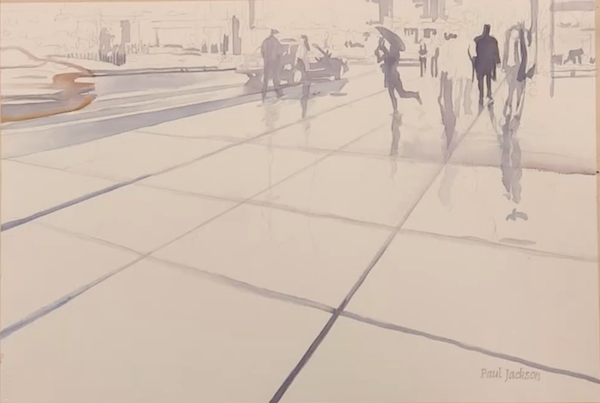
“I’m going to be sketching with paint to create this composition with just a light wash of a neutral, purple color that will disappear under all of the rest of the painting later,” Explains Jackson. “This will help me establish where my figures are going to go on the sidewalk.”
He notes, “With my pencil drawing, I really didn’t put that much down because I don’t want to limit myself. I want to be able to create and go on the fly with this painting. I also don’t want to have too much graphite on the paper to smear around.”
Masking and Underpainting
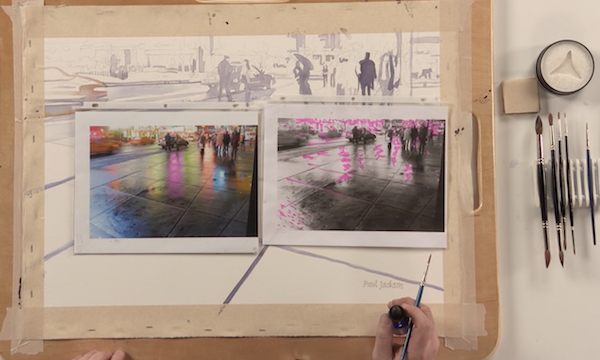
“I’m going to put masking fluid in quite a few places on this reference,” says Jackson. “In fact, I’ve taken a back and white Xerox of my photo and I’ve shown you all of the places I’m going to put masking fluid on here. It’s basically all of the lights in the background and a few of these highlight spots that happen through the pavement.”
Jackson notes it is perfectly OK if a little of the masking fluid drips on the pavement because it just adds to its textural effect. “There’s a lot of texture in this pavement that we get to work with,” states Jackson. “In fact, usually I’ll take the masking fluid, fill my brush completely up with it, and I’ll spatter it just a bit in the foreground.”
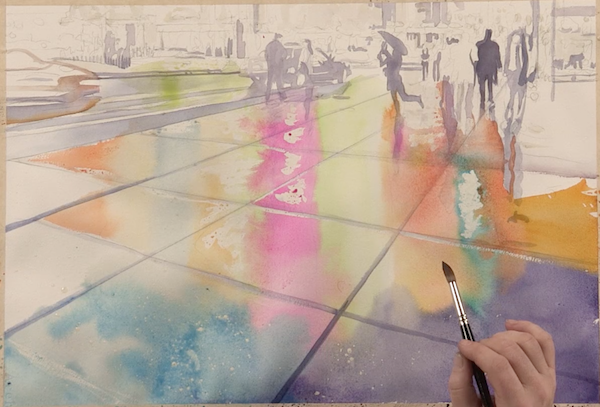
Now that the masking fluid is all dry, the artist moves on to applying a wash of water on top of it and also drop in bursts of soft color to capture the reflections coming from the lights above. “This is probably my favorite part of this painting,” says Jackson. “Wet-on-wet is not quite as controllable as wet-on-dry, but if you balance the water just right and make this really even, you can make this work.”
He continues, “Thin [the paint] out with lots and lots of water. I’m going to take my full brush and take about half the paint out, so that it’s a half full brush. It’s pointed and it’s not flat on the end. It’s not dripping out either. It’s just enough liquid to make this mark without flooding the paper with a big puddle.”
Boosting Color and Starting the Background
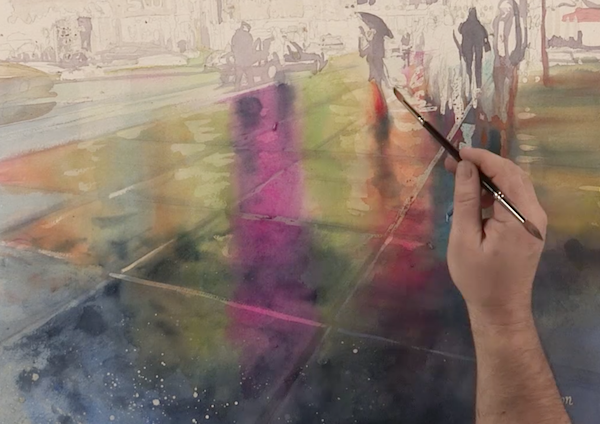
Now that is paper is once again completely dry, Jackson starts to remove some of the masking fluid by taking off his signature and a couple of lines in the pavement. “They’re going to leave a wonderful little lighter version of themselves underneath; but they’re no longer going to resist the water and paint, so these will get painted over and blended in a little bit,” notes Jackson. “You don’t want them all to stand out. I do want to leave a few of them on, so I’m sort of selectively taking them off.”
He adds, “Let’s do one more layer of big wet in wet wash … still getting some wonderful soft edges because I’ve got plenty of liquid on my paper. Those little soft edges really make this look like wet pavement.”
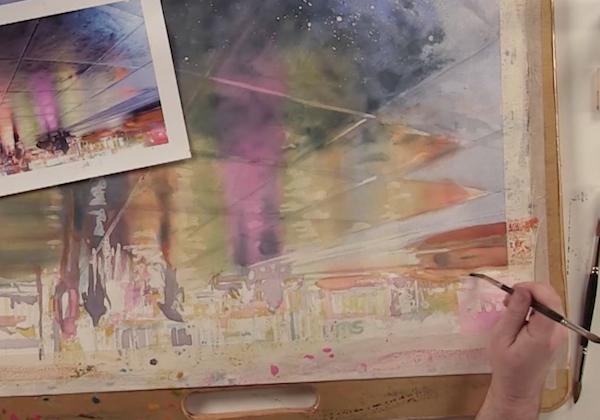
Next, Jackson spins the painting around and starts working from the top down. “You always want to orient your paper so that it’s easiest for you to make the marks that you want,” advises Jackson. “If you have a problem seeing the image upside down, turn your reference upside down. That makes it easy.”
When you paint upside down, explains Jackson, you really are just looking at the abstract shapes rather than trying to paint what you think your figures should look like. “Paint the shapes that you see instead, and you’ll have a lot better results,” he adds.
Details, Details
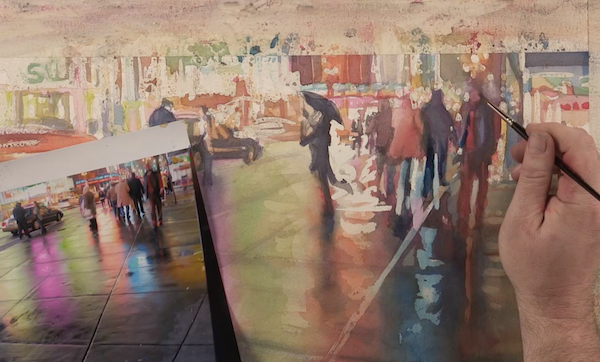
When it comes to the figures, capturing all the details isn’t al that necessary. “It’s really ambiguous. It’s very hard to tell what’s going on with some of these folks because they’re in motion. It’s very wet and rainy and not all that focused on these fellows,” attests Jackson. “But that is OK. You don’t really want to focus on these guys. Still, they’re part of the composition, so you have to consider every element of your composition, but you also want to consider what their scale is and what their purpose is in the frame of the picture.”
He continues, “This girl [with the umbrella], her purpose is to draw your eye. I’m going to keep putting darker and darker pigment on her and modeling her, giving her more detail than most of the other characters in here, simply because I want her to stand out.”
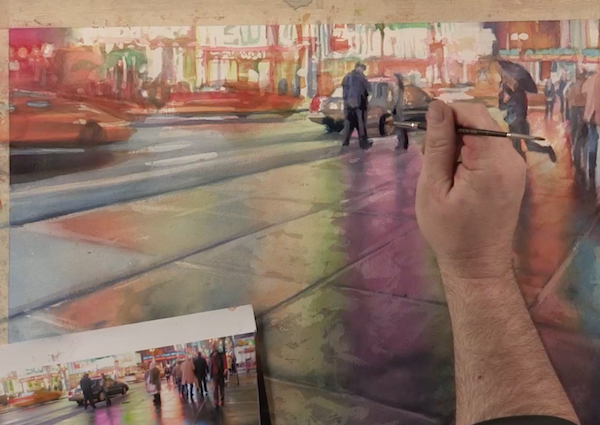
However, you still have to be cognizant of what details are essential to create a successful scene. “Throw those crescendo darks into our police officer here, just on the darkest parts of his uniform where his shadow is creating the edge [and] those tires on that car,” says Jackson.
He adds, “Just doing a little bit of calligraphy with a small brush and some really dark paint. Most of this is just indigo [with] a little bit of violet in it. These are those crescendos that are going to make this really leap out.”
Final Adjustments
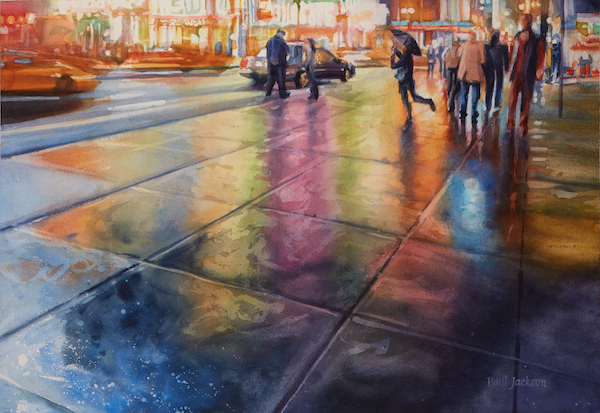
And now it’s time for the big reveal. “With the tape off, it really looks fantastic,” exclaims Jackson. “I got the whole vibrant energy of the city all in one little piece of paper. Really great implications of motion and reflection and light, a lot of chaos with the people going on. I really like the fact that I didn’t focus too hard on all the details. It made it a lot more fun to do this piece. I got to do all the fun stuff, like spattering and spraying and doing all the wet-on-wet.”
Jackson notes that although mastering Wet-on-wet painting can be kind of tricky, he believes it is one of the most fun and visually-pleasing things about watercolor. “It’s really the technique that says ‘watercolor,'” concludes Jackson. “When you see wet-on-wet in it, that gradation, that beautiful smooth flow … in watercolor, we can do that easier than pretty much any medium.”
Don’t stop there. Access Paul Jackson’s Watercolor Workshop: Nighttime in the City DVD now!
About the Artist
An accomplished watercolorist, Paul Jackson travels the world painting a variety of subjects, including still lifes, cityscapes, landscapes, and more. With awards and exhibitions across the U.S. and around the globe, Jackson is a regular watercolor enthusiast and author of two books, including Painting Spectacular Light Effects in Watercolor.
Honored as a signature member of the American Watercolor Society and the National Watercolor Society, and recognized as an Honor Member of the Missouri Watercolor Society, he is always cultivating his craft. Visit PaulJackson.com to find out more about the artist and his work.
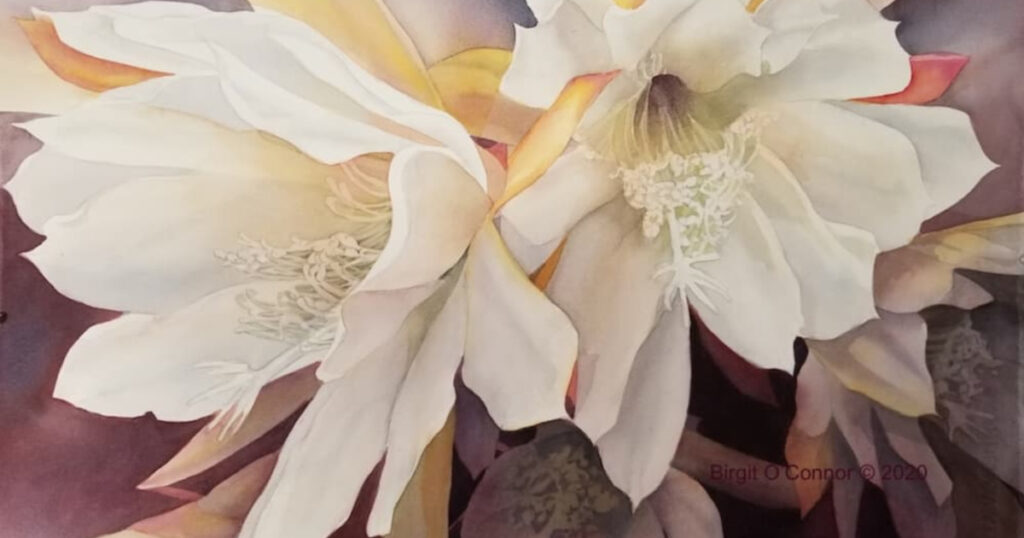
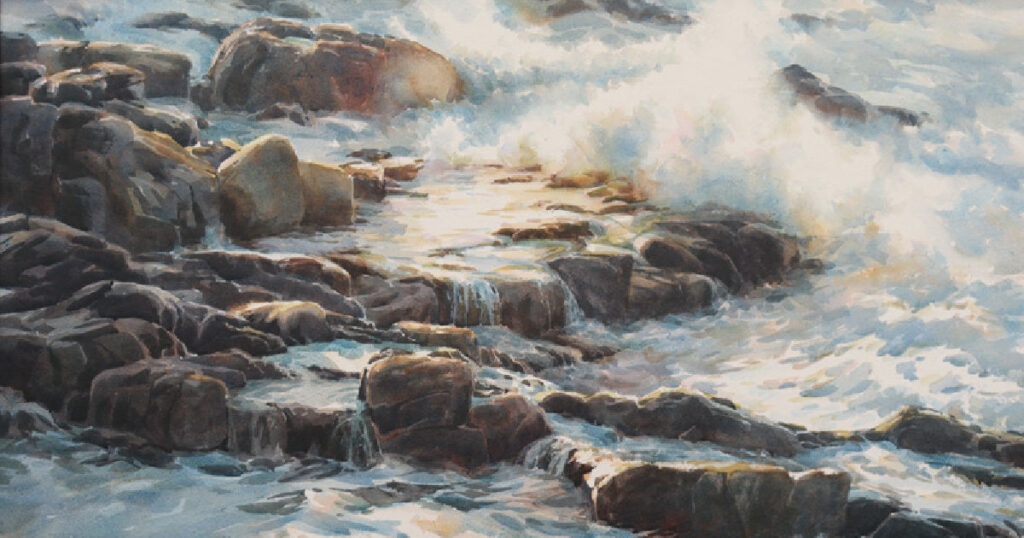
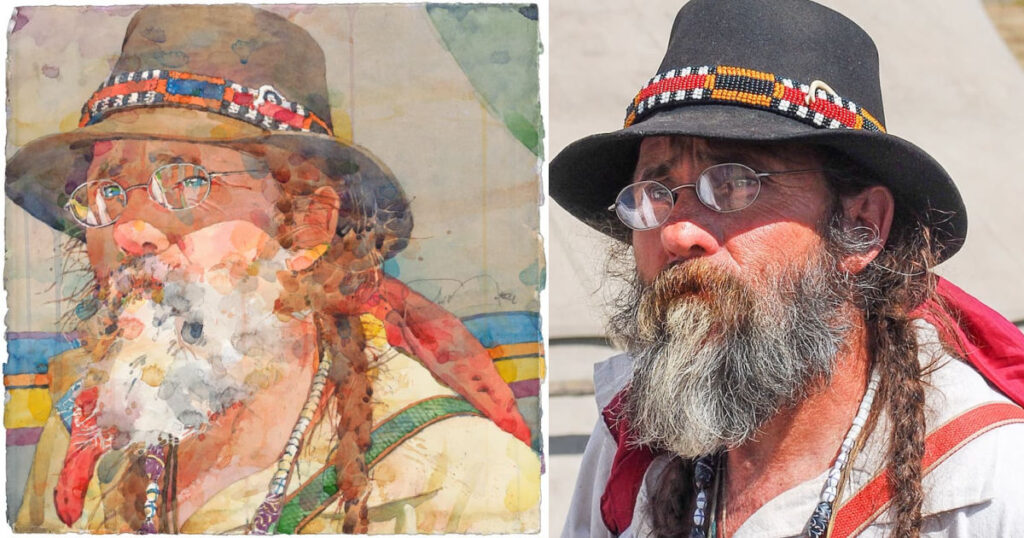
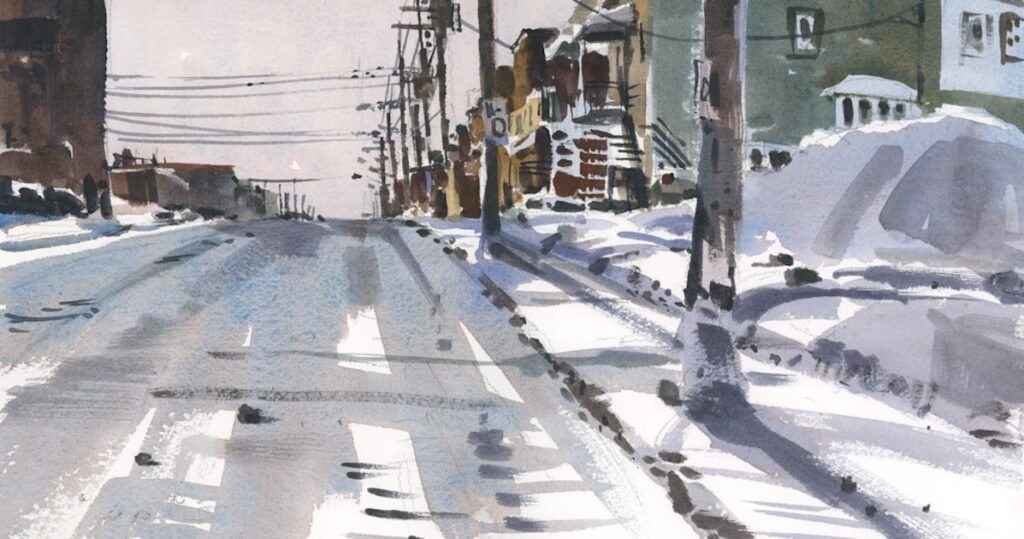
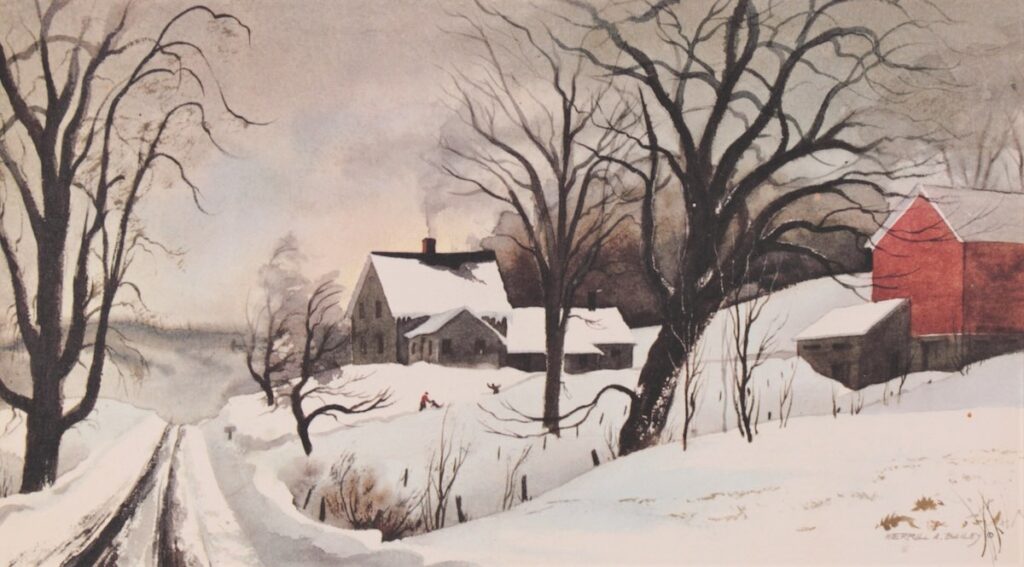
Have a technical question?
Contact UsJoin the Conversation!